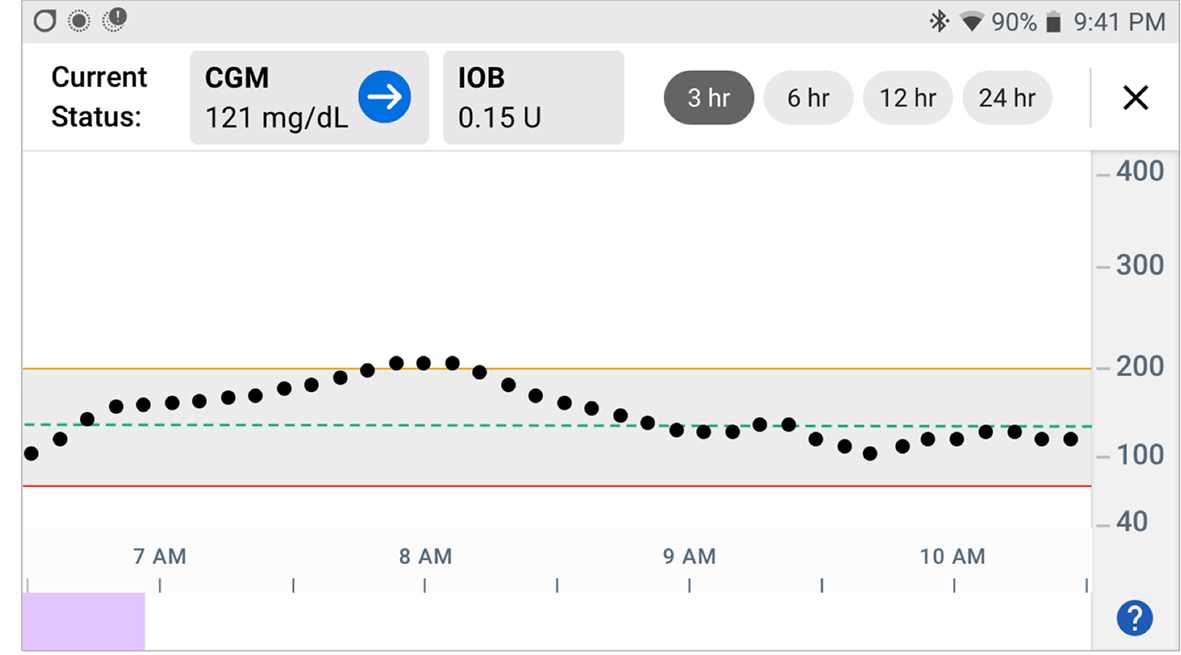Designing Freedom & confidence
Omnipod 5 is the world’s first FDA-cleared tubeless Automated Insulin Delivery (AID) system, designed for people living with Type 1 diabetes. By integrating a continuous glucose monitor (CGM) with automated insulin delivery, Omnipod 5 empowers users—especially children and caregivers—to manage blood sugar levels with fewer interventions and greater peace of mind.
As a regulated medical device, the product had to meet FDA Class II standards, maintain HIPAA compliance, and be trusted for life-critical decisions every day.

The Challenge
Design the mobile app experience that:
-
Seamlessly manages insulin delivery, CGM integration, and system monitoring
-
Reduces cognitive load for caregivers and patients, particularly in stressful or urgent situations
-
Ensures regulatory, clinical, and technical compliance for FDA approval
-
Creates a sense of trust, empowerment, and emotional safety across pediatric, teen, and adult users
-
Supports users with varying health literacy, digital familiarity, and emotional readiness
The experience had to feel simple without being simplistic, calm without being passive, and safe without being overwhelming.
My Role
-
Led UX design for the mobile app component of Omnipod 5, responsible for flows related to:
-
Insulin dosing visualization
-
CGM data monitoring and trend alerts
-
System setup and onboarding
-
User override and manual dosing
-
Safety alerts and failure states
Collaborated deeply with product, clinical affairs, engineering, regulatory, and human factors teams to align technical feasibility with human-centered design.
Built Axure prototypes for formative and validation studies, contributing directly to the FDA submission package.
-

Process Highlights
- Caregiver-Centric Research: Conducted empathy mapping sessions with parents, caregivers, and independent users to surface emotional and cognitive pain points.
- Journey Mapping: Charted daily experiences (daytime school activities, nighttime monitoring, exercise adaptation) to uncover opportunities for proactive support.
- Risk Analysis Collaboration: Worked with clinical and quality teams to prioritize safety flows and mitigate critical failure points through UI design.
- Prototype Testing: Designed and tested high-fidelity mobile app prototypes in simulated clinical environments, iterating based on user feedback.
- Accessibility Considerations: Prioritized text clarity, low-cognitive-load visuals, and non-color-dependent alert logic—even though not formally mandated by the FDA.
Design Decisions
-
Developed a calm, proactive dashboard showing CGM trends alongside insulin activity, with predictive indicators rather than just reactive alarms.
-
Designed layered alerting—providing guidance first, escalations only when necessary—to reduce alarm fatigue for caregivers.
-
Built fail-safe dosing flows with clear override paths for caregivers needing to manually intervene.
-
Integrated subtle emotional design techniques: choice of color, tone of language, and iconography designed to reassure, not alarm.
-
Created simplified onboarding with just-in-time education, allowing users to safely start therapy with confidence rather than confusion.
Outcome & Impact
-
Omnipod 5 became the first FDA-cleared tubeless AID system in the world.
-
Enabled patients and caregivers to achieve better glycemic control with less daily intervention, supported by intuitive UX.
-
Directly contributed to successful FDA validation through human factors research and UX evidence.
-
Internal feedback highlighted the Omnipod 5 app as the most emotionally intelligent product Insulet had brought to market.
-
Cited by families as a tool that allowed them to “finally sleep through the night without constant blood sugar monitoring.”
What I’m Proud of!
”Designing Omnipod 5 wasn't just about functionality—it was about changing daily life for people living with diabetes. It was about helping parents feel less fear, children feel more freedom, and caregivers reclaim moments of peace.
This work represents the heart of user-centered design: taking something life-critical, overwhelming, and exhausting—and making it feel safe, simple, and empowering
